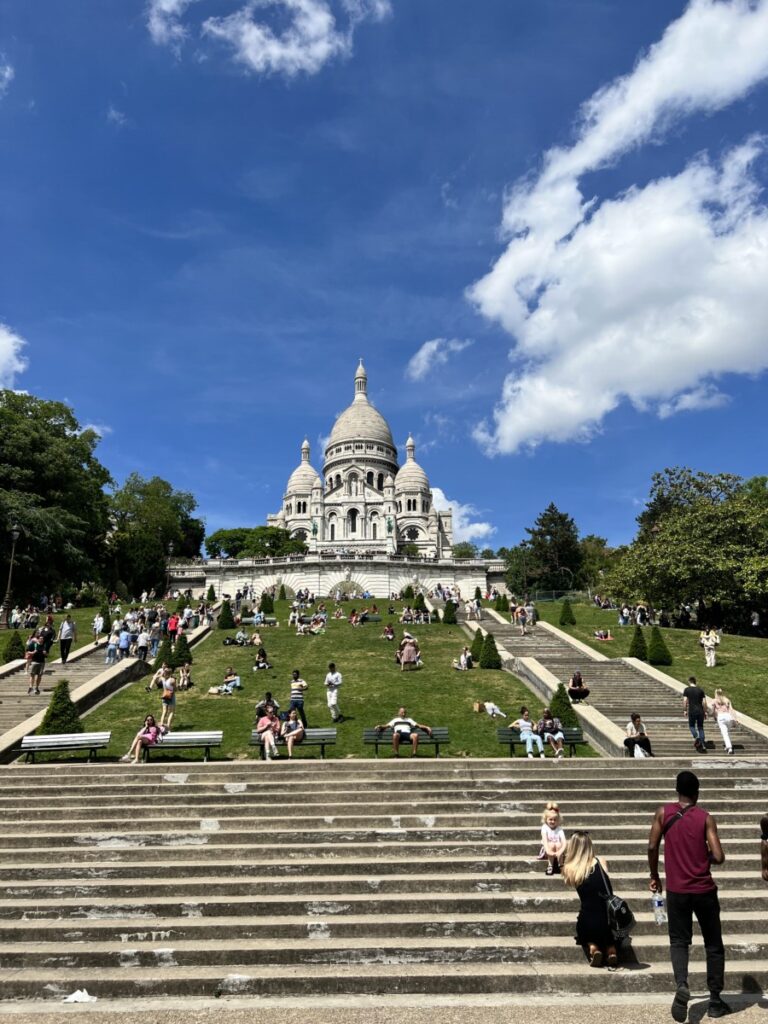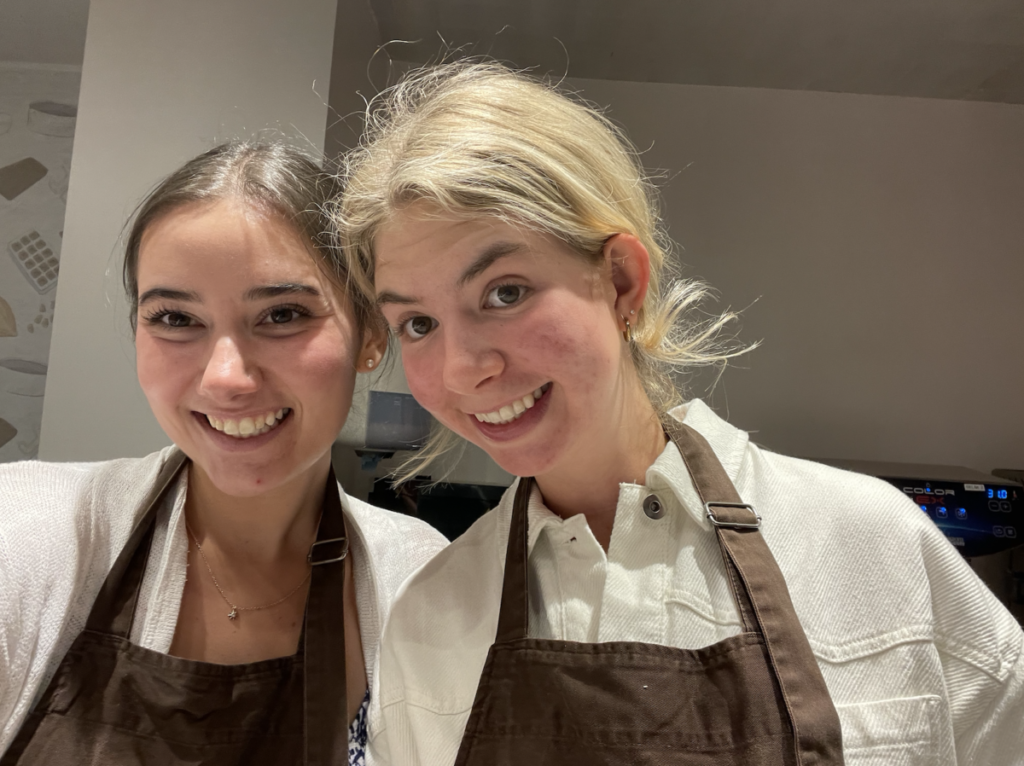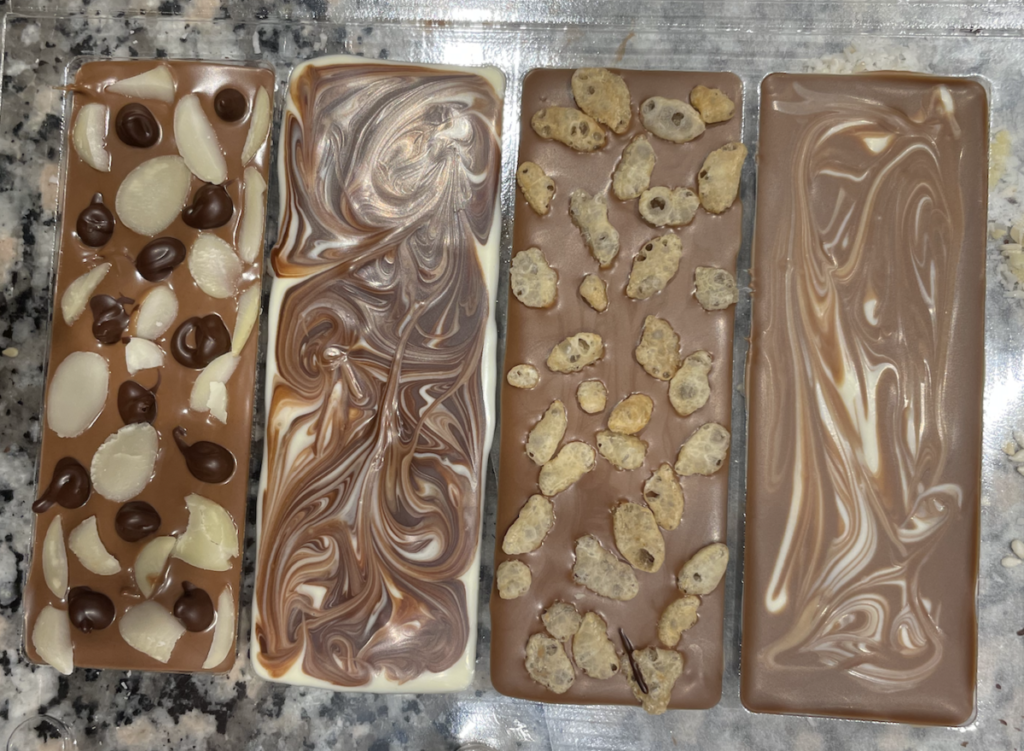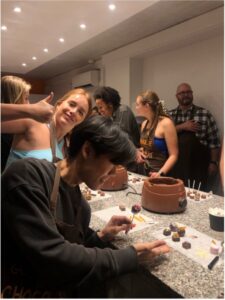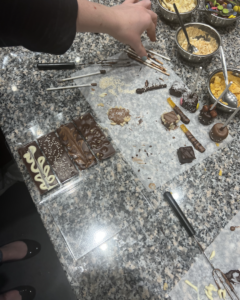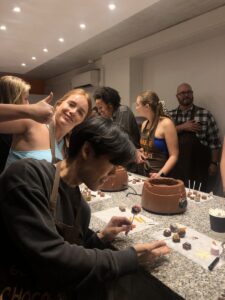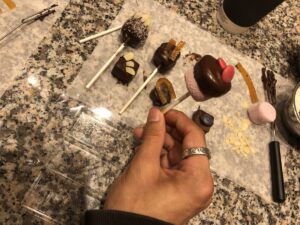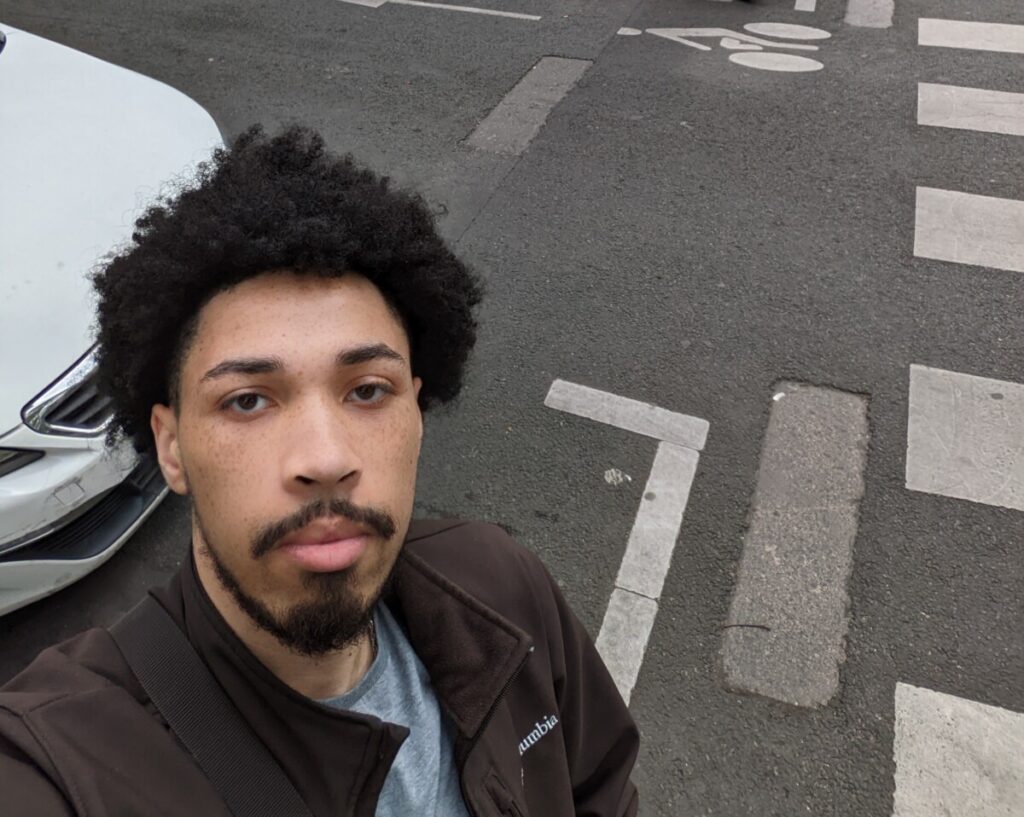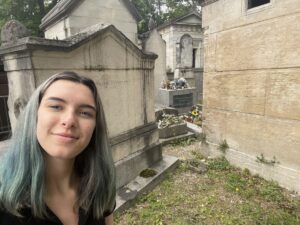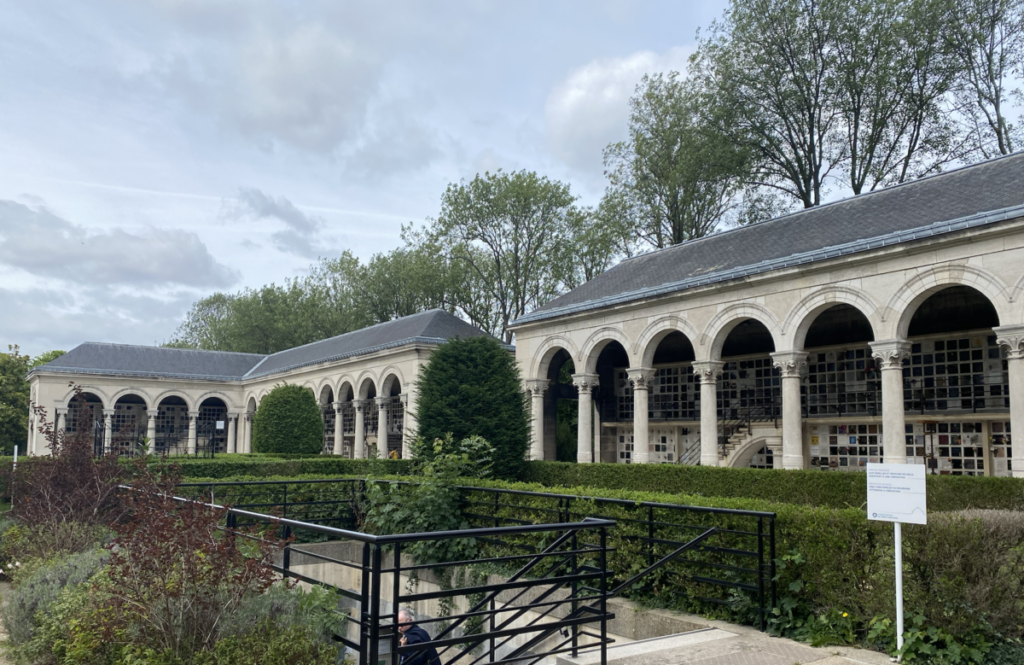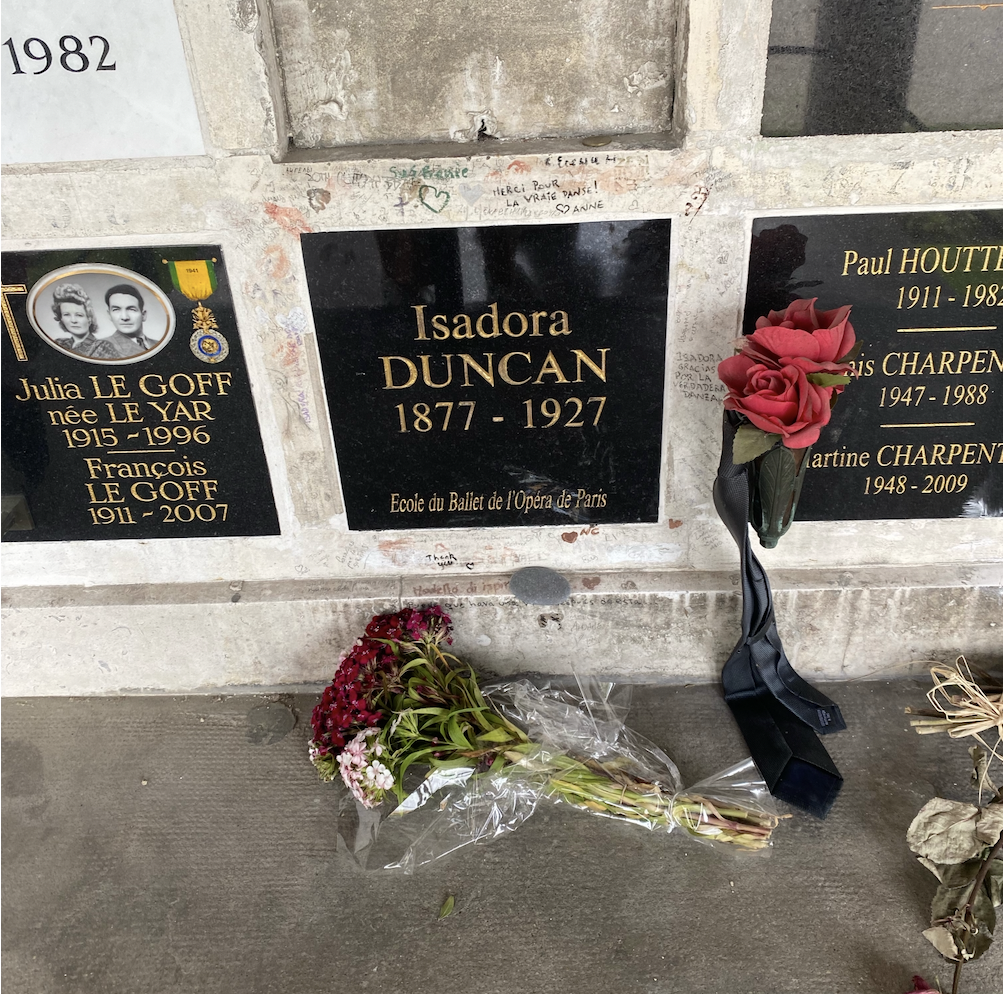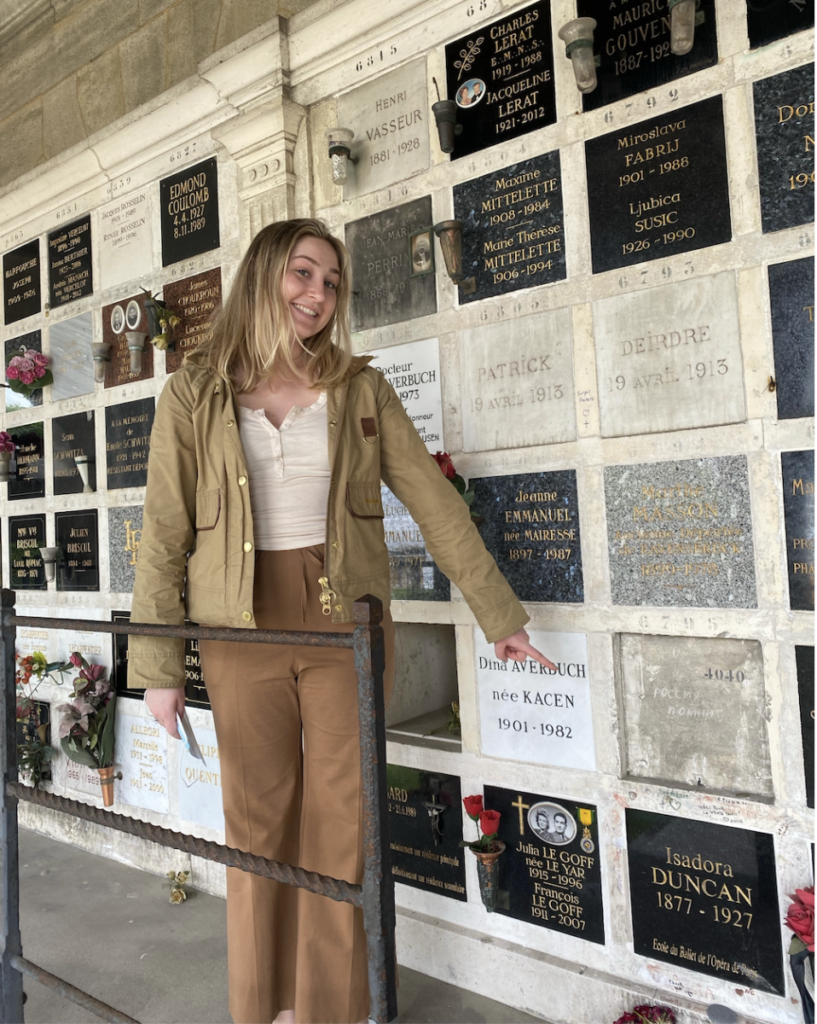At the beginning of our trip, I told myself I would kick my newfound caffeine addiction, but I quickly realized the importance of coffee in French culture. I decided to make the most of the rich culture while I am here, so, instead of avoiding coffee, I made the goal of trying coffee from a different cafe every day. In America, we are always on the go, which is incorporated in our coffee preferences. At school, I find myself preferring to grab a coffee from Blue Donkey or Starbucks on my way to class instead of enjoying the drink while sitting with my friends. In France, coffee and meals are a social event, and I have noticed myself finishing my food and drink faster than other patrons, something I try to be mindful of while I am here. I have enjoyed the slower pace of meals in Paris, as it offers a great time to catch up with friends and destress after class, homework, and our various excursions.
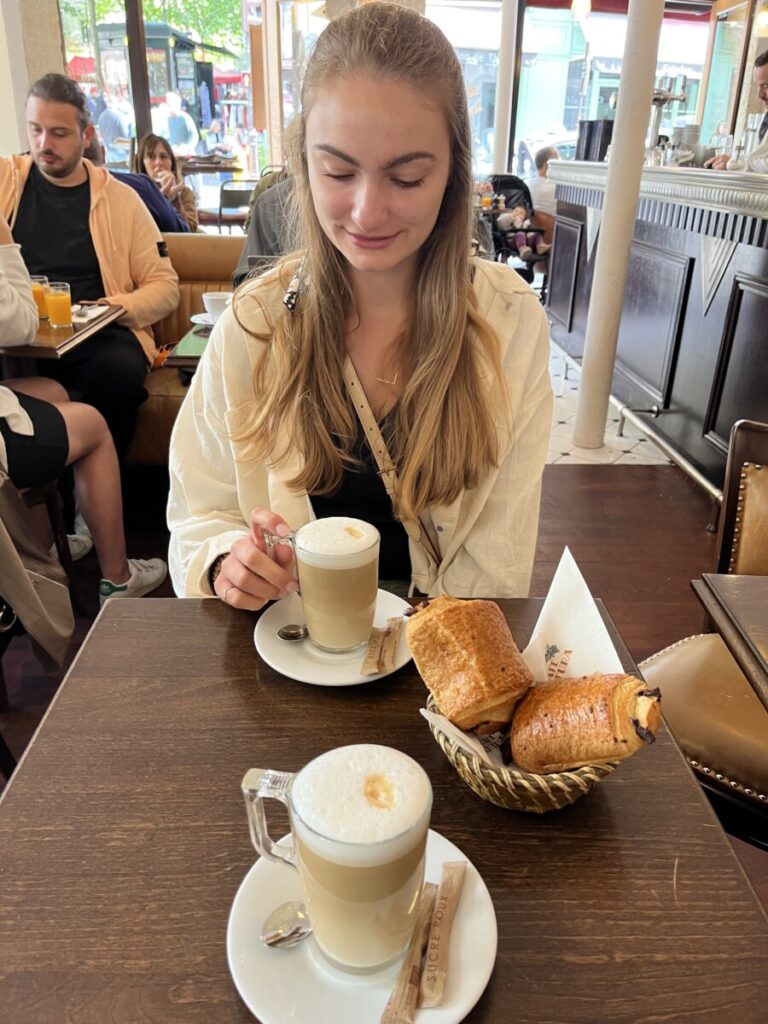
In our neuroethics class, we discussed whether coffee is considered a cognitive enhancer, an interesting question when you consider how popular the drink has become in modern times. During our discussion, one of my classmates mentioned the neuroprotective properties of coffee. Wanting to investigate this more, I searched for further research and stumbled upon an article about the effects of elevated coffee intake, defined as consuming more than three cups of coffee per day, in patients coinfected with HIV and HCV. In our NBB 402W class, we read and reviewed a paper discussing the coinfection of HIV and syphilis, so this research seemed related. As I read the paper, I learned that people who are coinfected with HIV and HCV experience an accelerated aging process and cognitive impairment. The authors researched regular coffee intake and neurocognitive performance using data from 139 coinfected patients. Their results found a significant, positive correlation between elevated coffee intake and neurocognitive performance in verbal fluency, psychomotor speed, and executive functioning, suggesting that increased coffee intake may preserve neurocognitive functioning in people living with HIV/HCV coinfection (Antwerpes et al., 2020).
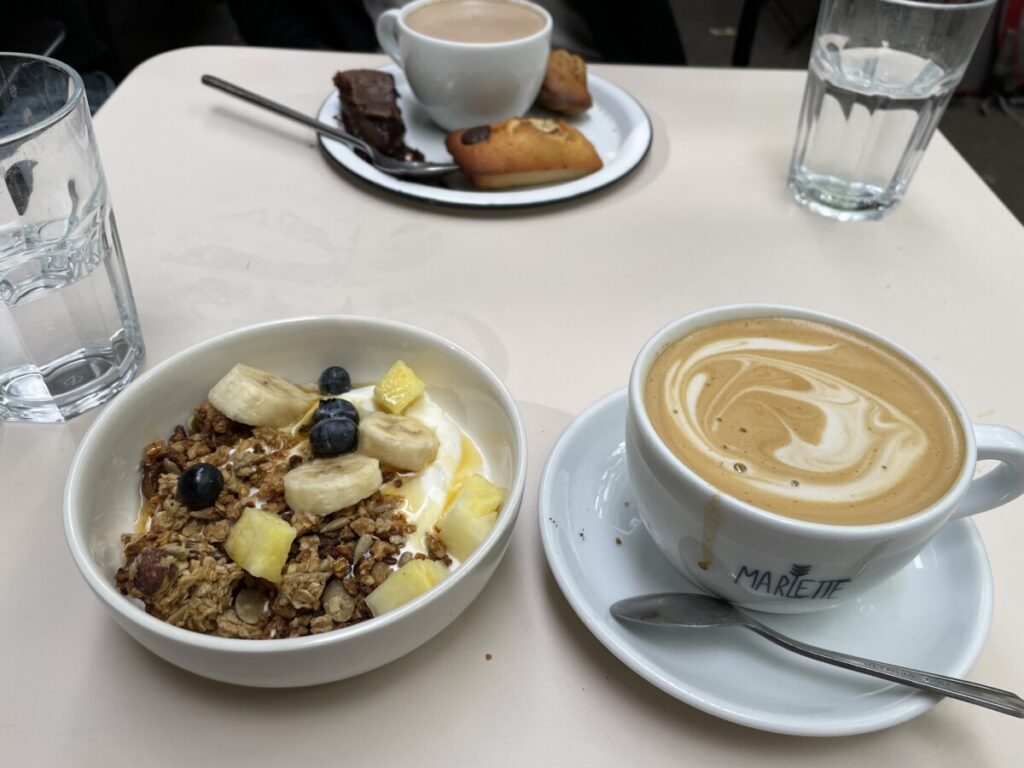
Although this study focused on sexually transmitted diseases, I wonder about the correlation between coffee and neurodegenerative diseases. With a history of dementia in my family, and the amount of coffee I have been consuming this past year, it brings me hope that my coffee addiction could be doing something other than charging my credit card $5 a day.
Citation:
Antwerpes, S., Protopopescu, C., Morlat, P., Marcellin, F., Wittkop, L., Di Beo, V., Salmon Céron, D., Sogni, P., Michel, L., Carrieri, M. P., & The Anrs Co Hepavih Study Group (2020). Coffee Intake and Neurocognitive Performance in HIV/HCV Coinfected Patients (ANRS CO13 HEPAVIH). Nutrients, 12(9), 2532. https://doi.org/10.3390/nu12092532



